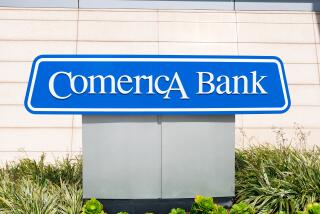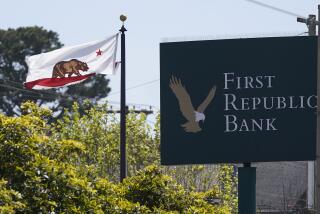S&Ls; Face Tough Decisions Amid Rising Tide of Red Ink
- Share via
HONOLULU — Savings institution executives, enduring their worst losses since the Depression, face critical decisions next year that will determine the future shape of their industry.
In the first six months of 1988, the nation’s 3,048 S&Ls;, lost $7.5 billion. By year’s end, losses will almost certainly surpass the previous record of $7.8 billion, set in 1987.
Amid the tide of red ink, 4,050 S&L; executives gathered in the palm-ringed resort hotels along Waikiki Beach for the 96th annual convention of the U.S. League of Savings Institutions, the industry’s oldest and largest trade group.
In the opening session today, executives will begin mapping strategy for 1989, when Congress will consider whether taxpayers must pay to bail out the S&L; deposit insurance fund, which so far has been industry-funded.
Regulation Problems
At midyear, 497 institutions were insolvent, but still open, because federal regulators lacked the money to shut them down and pay off depositors. Another 408 were solvent but losing money.
The Federal Home Loan Bank Board, which regulates S&Ls;, estimates the total cost of cleaning up the mess at $45 billion to $50 billion, but private analysts go as high as $100 billion.
Much of the red ink is concentrated in the Southwestern oil states of Texas, Oklahoma and Louisiana, hard hit by the collapse of oil prices and the resulting drop in real estate values.
But, the losses were magnified in Texas, California and Florida, by lax state regulation that permitted thrifts to make risky investments far removed from traditional home mortgage lending. Congress will almost certainly include some sort of measure aimed at preventing the problem from recurring. That decision will be made at the same time lawmakers figure out how to pay the bill, whether through a direct appropriation from the Treasury or through some sort of taxpayer-backed guarantee.
Even if remaining S&Ls; escape having to pay more to resolve the crisis, they’re sure to find many of the measures attached to a taxpayer bailout distasteful. The worst, from the thrifts’ point of view, is one proposed by Rep. Gerald Kleczka (D-Wis.). It would spell the end of a separate savings and loan system, merging it with the fund that insures commercial banks.
Theo H. Pitt Jr., chairman of Pioneer Savings Bank in Rocky Mount, N.C., and outgoing chairman of the U.S. League, said the trade group’s two goals next year will be to persuade Congress that healthy S&Ls; can’t shoulder any more of the burden of bailing out the insolvents, and that U.S. home buyers need a separate S&L; system.
S&Ls;, because of the poor condition of the Federal Savings and Loan Insurance Corp., already pay more than twice as much for deposit insurance as commercial banks--21 cents per $100 of deposits for S&Ls;, compared to eight cents for banks.
More to Read
Inside the business of entertainment
The Wide Shot brings you news, analysis and insights on everything from streaming wars to production — and what it all means for the future.
You may occasionally receive promotional content from the Los Angeles Times.










